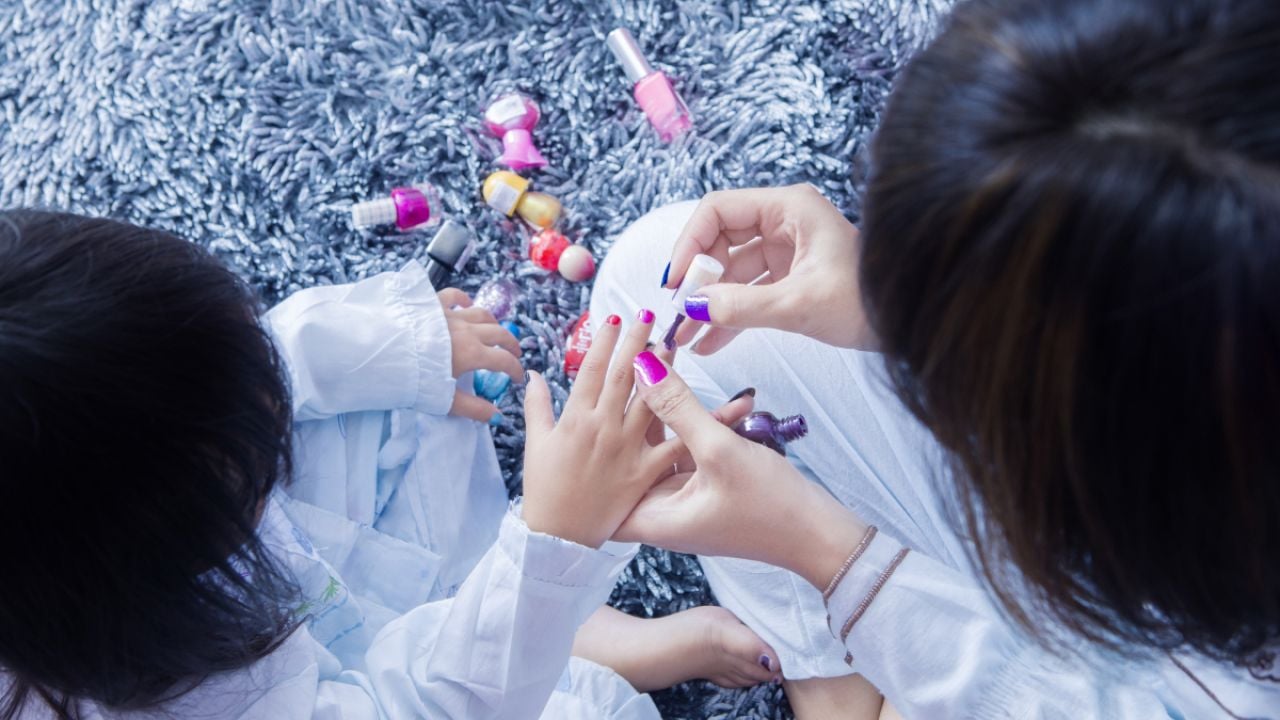
- Phthalates are a class of endocrine-disrupting chemicals.
- These chemicals are associated with health harms, including increased risk of cancer, asthma and allergies, and learning attention and behavioral difficulties in children.
- They are found in many consumer products, including paint, plastics, fragrance and personal care products, such as nail polish.
Introduction
As you start your day, phthalates have joined your morning rituals. Your first dose happens the moment you pull back your plastic shower curtain and then lather up with shampoo and soap. You’re exposed to these endocrine disruptors again in the fresh scents of your deodorant and body lotion.
These chemicals lurk in seemingly harmless items like your plastic key ring and air freshener. Phthalates have an uncanny ability to show up in unexpected places, making their presence felt in plastic, vinyl, personal care products, children's toys, and often hide in “fragrance.”
They’ve been around since the 1930s and are now widely used. More than three in four adults have detectable levels of these chemicals in their urine.
Phthalates are endocrine disruptors, a class of potent chemicals that interfere with our hormone systems.
Effect on our health
The endocrine system is a network of hormones, hormone-producing glands and hormone receptors. It’s critical to many of the core functions of the body, including growth and development, metabolism, reproduction, sleep, stress and the immune response.
Phthalates disrupt the hormone system by increasing the production of some hormones, decreasing the production of others and interfering with hormone signaling which can cause health problems.
Some of the health harms associated with phthalates are changes to fertility, early puberty and risk of low birth weight, obesity, diabetes, impacts to the immune system, cardiovascular and respiratory problems, some cancers and neurological and behavioral problems.
Children, infants and the growing fetus are especially vulnerable, since they’re still developing.
How we’re exposed
Most of us are exposed daily to multiple products containing phthalates.
Phthalates are used as plasticizers for a wide range of consumer and industrial uses, including cosmetics, personal care products like menstrual pads and diapers, building materials like vinyl flooring and adhesives, food packaging and even food itself.
New safety concerns
A study from 2021 showed a potential link between childhood exposure to phthalates and an increased risk of bone cancer. The study found a positive association between exposure to any phthalate during childhood and osteosarcoma, a rare type of bone cancer with a 20 to 40 percent fatality rate if it has not spread.
Phthalate exposure has also been linked to a higher risk of breast cancer and infertility outcomes in women.
Prenatal exposure to these chemicals can also lead to learning, attention and behavioral disorders in children, according to a 2021 study in the American Journal of Public Health.
Minimizing your exposure
To avoid some of the most common exposures to phthalates, choose these products carefully or limit your use of them:
- Nail polish. Dibutyl phthalate is a chemical often added to nail polish to make it chip-resistant. Look for this ingredient on the label of the polish. It may be shortened to DBP.
- Fragrance. Diethyl phthalate is frequently used as part of the “fragrance” in some products. It won’t be listed separately, so you’re better off choosing personal care products and cleaners that don’t have the word “fragrance” on the ingredient list.
- Kitchen plastics. Phthalates may be found in many plastic items in your kitchen. They’re more likely to leach out of plastic when it’s heated, so avoid cooking or microwaving in plastic containers, whenever possible.
- Vinyl toys. Phthalates are used to make PVC (vinyl) toys soft. Avoid giving these to your children and instead opt for toys made of wood and other materials.
- Paint. Craft paints may contain phthalates as solvents. Be sure to use these products in well-ventilated areas.
- Vinyl. Vinyl isn’t only found in children’s toys. It’s used in many consumer products, including lawn furniture, garden hoses, building materials like flooring and items of clothing. In addition to carefully choosing products that don’t use vinyl, one easy change you can make is switching to a non-vinyl shower curtain.
- Air fresheners. Just like fragrance in your personal care products, most air fresheners contain phthalates. Avoiding these products can help you avoid a source of exposure.
You can also consult EWG’s Skin Deep® cosmetics database and Guide to Healthy Cleaning to find personal care and cleaning products free from phthalates and undisclosed fragrance ingredients.



